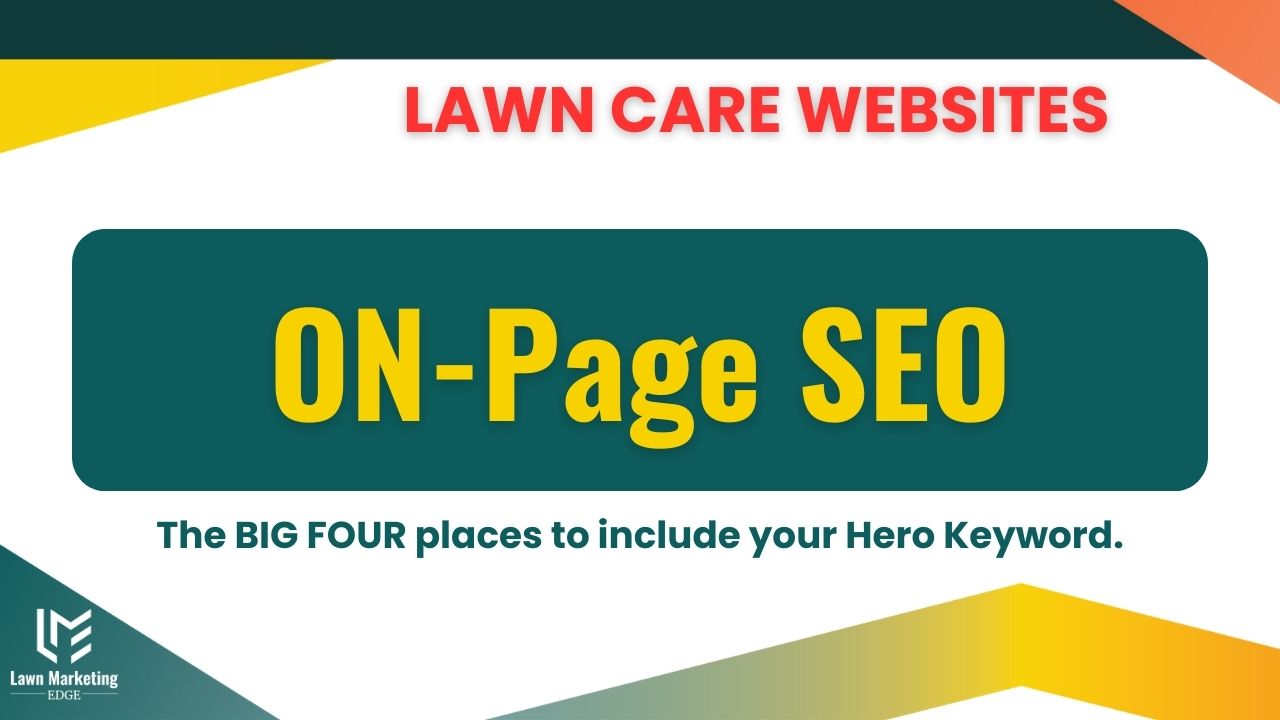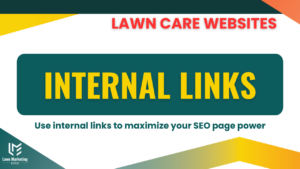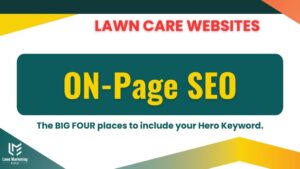On-Page SEO for Landscapers and Lawncare EASY MODE.
Running a lawn & landscaping business is tough, and we know that the complex world of SEO doesn’t make your life any easier.
We know you have enough things on your plate, so this is designed to simplify your Onpage-SEO to-do list. Set a solid foundation.
Why care, you ask? Local search is still the dominant cost low lead generation tool for most Lawn and Landscape business owners. Get this right, and you may need few other lead channels.
Buckle up, grab a cup of coffee, and let’s grow your business.
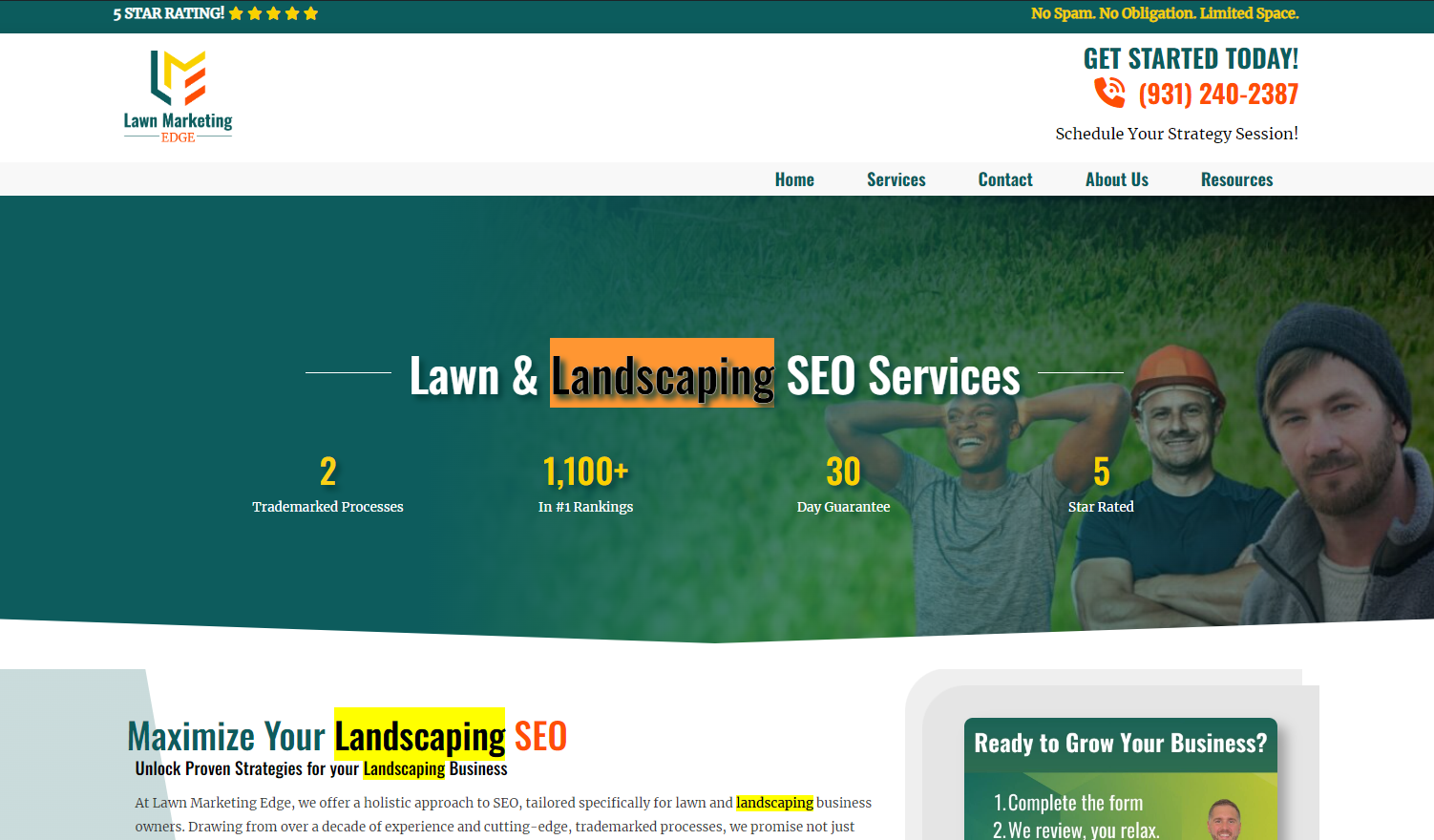
It all starts with finding the right target keyword?
Imagine your ideal customer searching for landscaping services online. What magic words would they type? Your first step is to identify your hero keyword (We have an entire video on this) is locating the keyword with the highest search volume and commercial intent for your audience.
Think of it as your North Star, guiding your SEO strategy and content creation on a per-page basis. Remember, search volume and search intention are generally your two biggest indicators.
(We’ve actually done all of this for you, you can download our complete Hero Keyword research guide here.)
For example:
- Broad keyword: “Landscaping services” (high volume, but low intent)
- Hero keyword: “Lawn care and landscaping services near [your city]” (lower volume, but higher intent)
So what’s next? Here’s a video detailing each of the big 4 keyword placements, which you can find on our channel.
So, where do I place those keywords on my landscaping and lawncare website?
Now that you’ve selected your hero keyword, it’s time to strategically plant it throughout your lawn & landscape website like seeds, nurturing it for optimal growth and organic visibility.
Remember, keyword placement should be natural and integrated seamlessly within your content, not forced or keyword-stuffed.
Here’s a deeper dive into each key area:
#1 URLs
Your website address is often the first impression, so make it count! Include your hero keyword naturally, ideally towards the beginning of the URL. For example, instead of “[your company name].com/services”, use “[your company name]-lawncare.com”. This helps search engines and users understand the page’s content and relevance.
#2 SEO Title & Meta Description
Think of these as your landscaping website’s storefront window on search engine results pages (SERPs).

Craft a compelling title that includes your hero keyword and relevant variations, ideally within 60 characters. Aim for clarity and intrigue to entice users to click. For the meta description (around 160 characters), provide a concise overview of the page’s content, including your hero keyword and a call to action.
Example:
Hero Keyword: Lawn Care and Landscaping Services in [Your City]
SEO Title: [Your Company Name] | Expert Lawn Care & Landscaping in [Your City]
Meta Description: Get a lush, healthy lawn you love with our comprehensive lawn care and landscaping services in [Your City]. Free consultations, call today!
#3 H1 Heading
This is your page’s main headline; make it clear, concise, and captivating. Naturally, incorporate your hero keyword here, but prioritize readability and user engagement.
#4 Body Content
Don’t just sprinkle your hero keyword randomly throughout the text on your lawn care website and pages. People are going to think it’s spammy, and so will Google.
Aim for a natural integration, aiming for at least one placement but focusing on creating informative and engaging content. Use variations, synonyms, and long-tail keywords related to your hero keyword to expand your reach and target specific search queries. This could include your service offerings, e.g., landscape design, lawn mowing, hardscaping, mulch installation, etc.
Regardless of which keyword you choose to target and which of its variations you choose to include, keep in mind that high-quality content that resonates with your audience is key for both SEO and user experience.
And here’s a pro tip – Utilize keywords naturally in your subheadings (H2s, H3s) to further structure your content and improve readability while incorporating relevant keywords
(BONUS!) Images & Alt Text
Don’t forget about your visuals! Optimize your images by using relevant filenames and alt-text descriptions that include your landscape or lawn care keyword. This helps search engines understand the image content and improves image search visibility. For example, instead of “image001.jpg”, use “lawn-care-services-[your city].jpg” for the filename and “Professional lawn care services in [your city]” for the alt text description. While this is a small part of the algorithm, these small bits stack up to big ranking changes.
Any tools I can use for these on-page SEO tips?
SEO isn’t a guessing game! Utilize these tools to identify opportunities and track your progress:
- SEO Chrome extensions: Tools like “SEO Meta in One Click” provide quick overviews of your page’s on-page SEO elements.
- Inspect element: Right-click on any web element to reveal its code, including keyword usage.
- Google Search Console: This free tool from Google offers valuable insights into your landscaping website’s search performance, including keyword rankings.
- Keyword research tools: Tools like Google Keyword Planner and Ahrefs help you identify relevant keywords and their search volume. This helps you expand your keyword reach while still targeting relevant users.
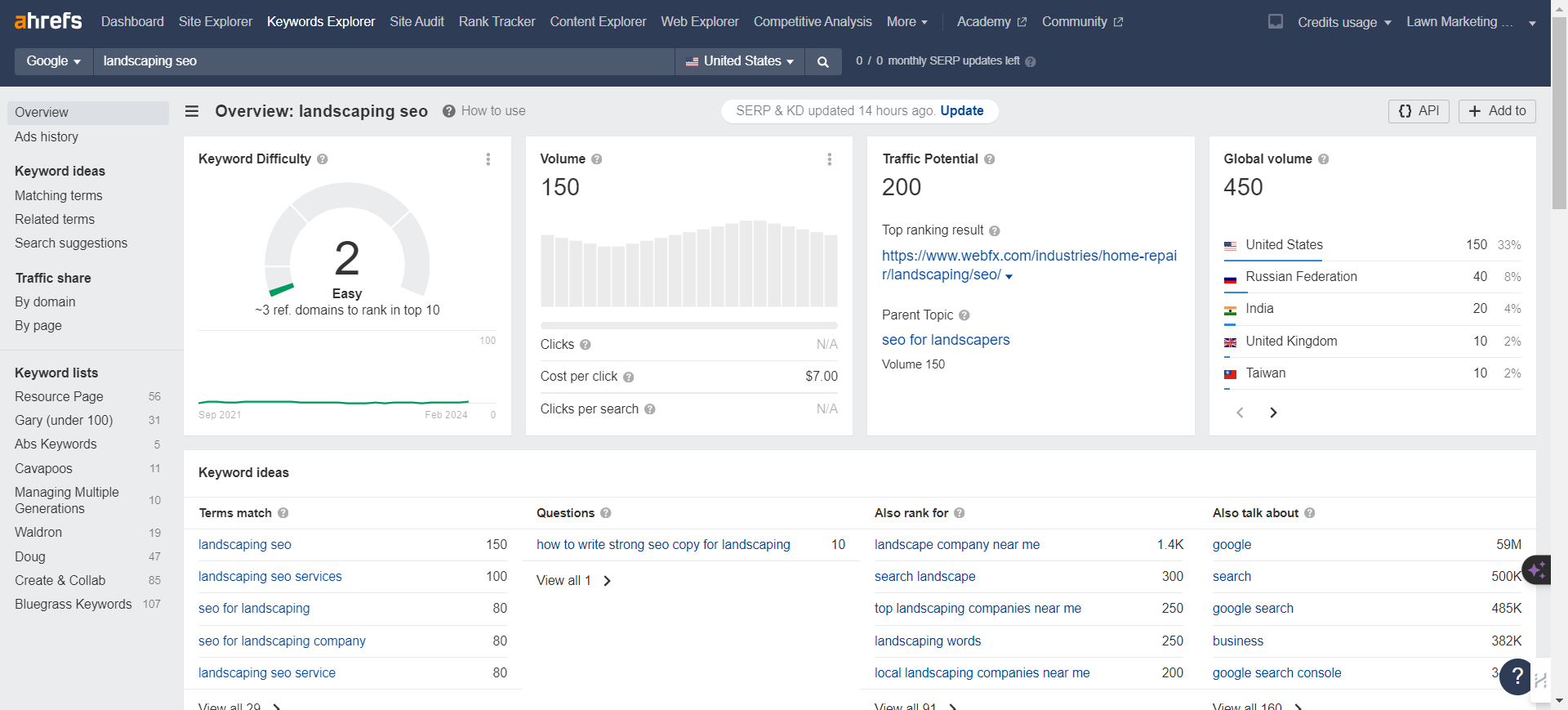
What else should I do to boost my landscaping website’s ranking?
On-page SEO is just the foundation. To truly bloom online, consider these additional strategies:
Link building
Acquire backlinks from high-quality websites in your industry. Think of it as getting positive recommendations from fellow landscapers and lawn care professionals! Focus on relevant, local websites with good domain authority. Check out our blog post on backlinks and link building to learn more.
Technical SEO
Ensure your lawn care website is mobile-friendly, loads quickly, and has a clean technical structure. This improves user experience and search engine crawlability. Use tools like Google PageSpeed Insights to diagnose and fix technical issues.
Local SEO
Claim and optimize your Google My Business listing. Include relevant local keywords throughout your website content to attract customers in your area. Consider creating local service pages targeting specific neighborhoods or towns. That way, each page has a narrower target and you’re not trying to optimize for a million services and cities that you want to cater to.
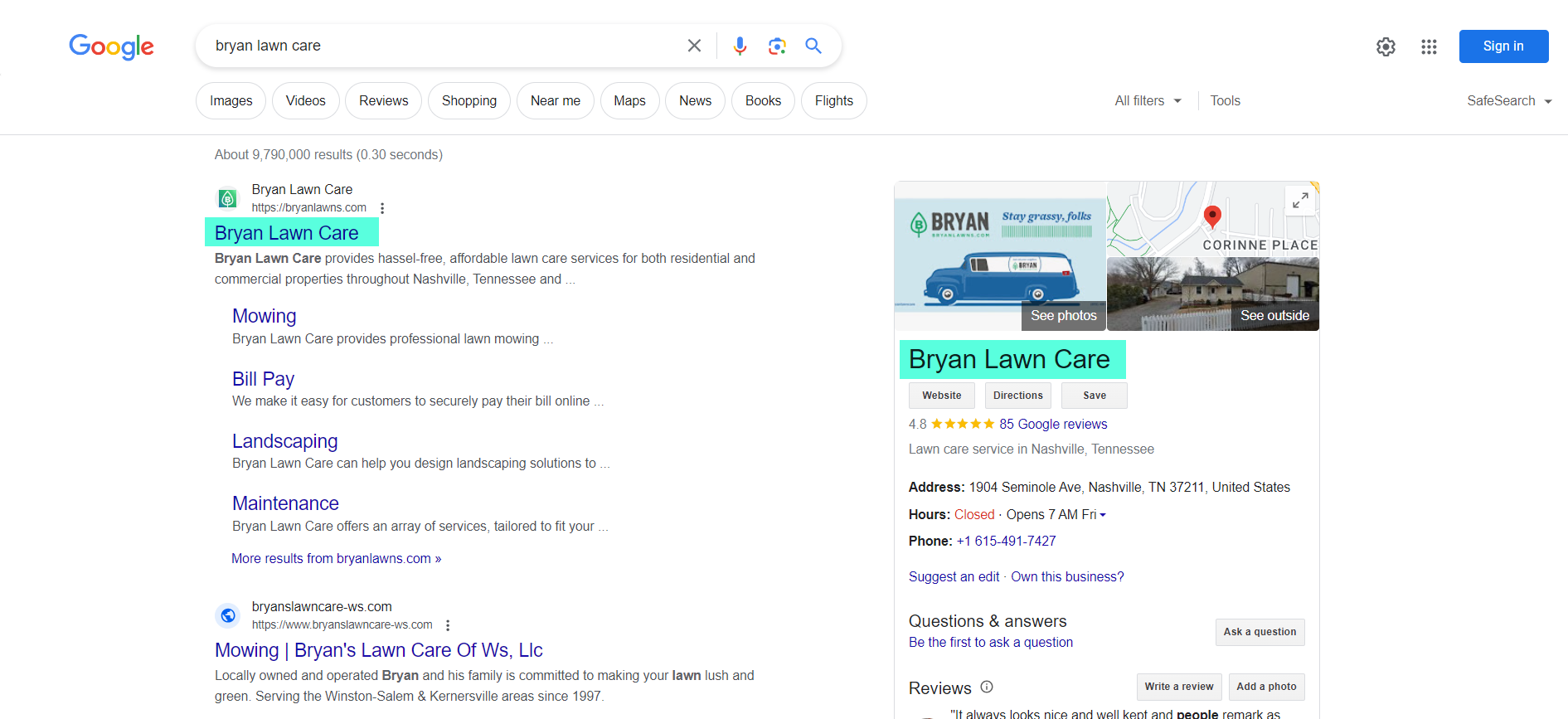
If you want to learn more about local SEO, go to our YouTube channel and watch our FREE webinar on how to set up and optimize your Google Business Profile.
Content marketing
Regularly create high-quality content that addresses your target audience’s needs. Think blog posts, case studies, infographics, or videos, all optimized for relevant keywords and promoted on social media. Share your expertise to establish yourself as a thought leader in the lawn care and landscaping community.
Track and analyze
SEO is a journey, not a destination. Regularly track your website’s performance using tools like Google Analytics and Search Console. Analyze keyword rankings, traffic sources, user behavior, and conversion rates to identify areas for improvement and adjust your SEO strategies accordingly. Don’t be afraid to experiment and try new things!
![]()
Stay up-to-date
The SEO world is constantly evolving, so keep your knowledge fresh! Follow industry blogs, attend conferences, and subscribe to newsletters to stay informed about the latest trends and algorithm updates.
Consider professional help
If managing SEO feels overwhelming, consider seeking help from an experienced SEO agency or consultant. Their expertise can save you time and effort, ensuring your lawn & landscape website is optimized for maximum visibility and organic traffic.
If you want to learn more about what you can do to optimize your website, check out our 2024 Landscaping SEO Strategies guide. Who knows, you might just see growth like this in the next 6-12 months!

As a final note, like we always say – SEO is a marathon, not a sprint.
Consistent effort, strategic implementation, and ongoing adaptation are key to achieving and maintaining high search engine rankings. By wielding these essential elements and tailoring them to your specific business and target audience, you can cultivate a website that attracts qualified leads, converts them into loyal customers, and helps your lawn and landscape business flourish online.


